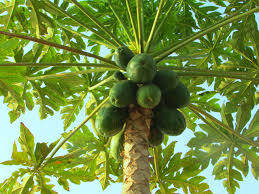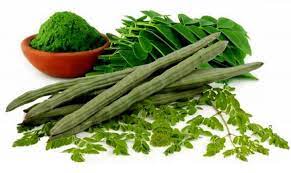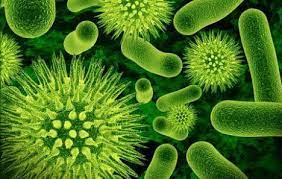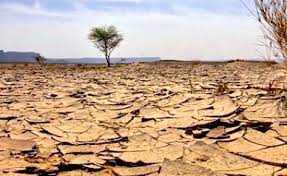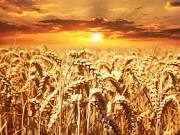
Wheat is an essential type of cereal cultivated in temperate regions, the grain of which is crushed to produce flour for making products like bread, pasta, and pastry, among others.
Wheat is cultivated in a larger area when compared to other crops and is also a major source of carbohydrates. In addition, it is rich in major nutrients like protein, dietary fibre, manganese, phosphorus, and vitamin B.
Several types of wheat are cultivated and sold in the market such as einkorn wheat, heard white wheat, soft white wheat, hard red winter wheat, hard sprint winter wheat, soft red winter wheat and durum wheat. The amount of nutrients present in wheat varies by type.
The global wheat market reached a consumption value of around USD 153.2 billion in 2022. The consumption is expected to grow at a compound annual growth rate (CAGR) of five point three percent (5.3%) in the forecast period of 2023-2028.
The Global Wheat Market is being driven by the food industry, which is rapidly expanding across all regions as people's disposable income rises, particularly in developing countries. With globalization, the prevalence of processed food has increased faster, driving demand for Wheat.
In many areas, the crop is a staple food. The product's growing demand is aided by the rapidly growing population, which increases demand for both Wheat and its starch. Wheat demand is higher among the middle-class population, which has a significant impact on the industry. The growing starch industry is a major driver of the Global Wheat Market.
Wheat starch demand has been increasing steadily for many years, and this trend is expected to continue in the coming years due to the growing popularity of processed foods. Wheat starch is also popular among health-conscious consumers because it is gluten-free and low in calories.
The rising demand for personal care products such as dry shampoo, cleansers, and lotions is driving the Wheat starch market, and thus the overall Wheat Market growth. Growing demand for animal feed is also propelling the industry forward. The growing food and beverage industries are driving up demand for processed flour, which is propelling the Wheat Market forward.
The market for wheat, based on type, is divided into:
Whole/Raw
Flour
Others
Based on application, the market is segmented into:
Feed
Food
Biofuel
Others
Wheat is the third most consumed grain in Nigeria after corn and rice and the country’s population growth is driving consumption. Currently, Nigeria’s population is strongly skewed toward youth and urban areas.
Nigeria’s urban population has grown steadily from eighteen point two percent (18.2%) to fifty-two percent (52%) of the total population over the past fifty (50) years.
Nigeria imports more than fifty percent (50%) of its wheat requirement from Russia and other Black Sea countries and Nigeria is the largest economy in Africa and a major oil producer. Its grain processing sector is highly concentrated, with some of the world’s largest food sector players.
The government is responding to the country’s dependence on imported wheat, the disadvantages of which have been highlighted by the effects of Russia’s invasion of Ukraine, by working to increase domestic production.
Nigeria will produce one hundred and sixty thousand (160,000) tons of wheat in 2022-23, up from ninety thousand (90,000) tons in 2021-22.
Starting wheat farming in Nigeria requires adequate planning and implementation to ensure a successful venture. Conduct thorough research on wheat farming, available varieties, market demand, and cultivation techniques in your area.
Soil: Soils with a clay-loam or loam texture, good structure and moderate water holding capacity are ideal for Wheat cultivation. Care should be taken to avoid very porous and excessively drained oils. Soil should be neutral in its reaction.
Seed treatment: It is suggested that seed should be treated with Vitavax, Bavistin, Thiram or Agrosan GN at 2.5 gm per kilogram seed for the management of loose smut, ergot, flag smut and head scab disease.
To protect the Crop from Termites and White Ants particularly in rain-fed area, treatment is suggested with Endosulphan 35 EC or Chlorpyriphos 20 EC at 700 ml per one hundred (100) kilograms of seed by mixing in five (5) liter of water and spraying over the seed followed by seed drying overnight before sowing, only healthy seeds of right cultivar suitable for a particular locality should be selected for sowing.
Planting / Seed rate: The seeds should be sown at one hundred (100) kilogram per hectare.
Climatic condition: Wheat crop has wide adaptability. It can be grown not only in the tropical and sub-tropical zones, but also in the temperate zone and the cold tracts. The optimum temperature range for ideal germination of Wheat seed is 20-25 C.
Fertilizer Application: High Yielding Varieties - 120:60:40 kilograms NPK (nitrogen, phosphorus, and potassium) per hectare (follow soil test or local recommendation). In case of dwarf timely sown varieties and medium and heavy soil, application of half dose of Nitrogen and full dose of P&K should be basal, dressed below five (5) cm of the seed in furrows. The remaining half quantity of Nitrogen should be top dressed in two split doses.
In light soils, Nitrogen will be more efficient, where two-third of Nitrogen and full amount of P&K are used basal, dressed below five (5) cm of the seed in furrows, the remaining quantity of Nitrogen should be top dressed at in two (2) split application, one-third after first irrigation and remaining one-third after second irrigation.
When cultivation of high yielding dwarf varieties of wheat is done with improved scientific methods, they produce about forty-five to fifty-five (45-55) qtl of grain per hectare under irrigated conditions and twenty-twenty-five (20-25) qtl per hectare under rainfed conditions. For safe storage, grain should be cleaned and dried well in sun for a few days so that moisture content of grain comes down to ten to twelve percent (10-12%).
Rainfed wheat has been successfully grown in Nigeria’s three highlands — Gembu (Taraba State), Jos (Plateau State) and Obudu (Cross River State). Wheat production in Nigeria is experiencing renewed attention from the government, the African Development Bank, and researchers. These efforts are paving the way for Nigeria to achieve self-sufficiency in wheat production.
The Central Bank of Nigeria through its Anchor Borrowers Program (ABP) is collaborating with the Wheat Farmers Association of Nigeria (WFAN) to extend wheat production from five (5) states to fifteen (15) states. The bank provides loans to support the farmers and gives seeds (with short gestation period) imported from Mexico to assist the farmers.
The heat-resistant seeds (13,000 tons) imported last year by Central Bank of Nigeria (CBN) have undergone multiplication in Jos, Plateau State and are ready to be distributed to the farmers. Yield per hectare is forecast to improve by eighteen percent (18%) (1.3 tons per hectare) as compared to (1.125 tons per hectare) reported for marketing year 2021-22.
Nigeria has comparative advantage wheat cultivation and establishing the farm would help to conserve scare foreign exchange and generate employment for our teeming youth.


















